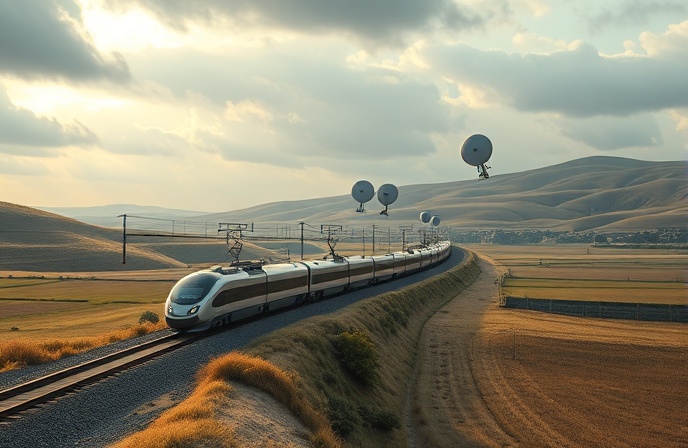UK Rail Wi-Fi: Formula 1 Tech Powers Next-Gen Connectivity on GWR
UK rail sector launches a “next generation” Rail Wi-Fi pilot, utilizing Formula 1 tech. This initiative aims to boost onboard digital connectivity and passenger experience.

Introduction
Peninsula Transport, in collaboration with Motion Applied, Great Western Railway (GWR), Network Rail, and Hitachi, has launched the UK’s inaugural “next generation” Superfast Wi-Fi pilot for rail, utilizing technology derived from Formula 1. The pilot project aims to enhance onboard digital connectivity across the UK rail network.
Main Content
Pilot Project Overview
The pilot program features a GWR Intercity Express Train equipped with the new Wi-Fi system. The technology demonstration occurred at London Paddington on November 17, with a Formula 1 car on display alongside the train to highlight the technological transfer from motorsport to rail. The project’s goal is to establish a new national standard for onboard digital performance by demonstrating the feasibility of high-speed, reliable Wi-Fi across the UK rail system.
Department for Transport Initiatives
The pilot aligns with the Department for Transport’s initiatives to eliminate mobile signal blackspots on key rail routes. In June, the department announced a partnership to improve coverage in tunnels, including the 4 km Chipping Sodbury tunnel near Bristol. Mobile operators are investing in 4G and 5G upgrades at Bristol Temple Meads and Paddington. Moreover, GBP 41 million has been secured in the 2025 Spending Review for the introduction of low-earth-orbit (LEO) satellite connectivity on all mainline trains by 2030, which will significantly improve Wi-Fi availability and speeds.
Technology and System Design
The Peninsula Transport pilot is testing a hybrid system that combines signals from ground-based cellular masts and LEO satellites. This system aims to deliver superfast and reliable connectivity without requiring extensive trackside infrastructure, offering a cost-effective scaling solution across the national network. The system is designed to provide an “always-on” experience to improve passenger connectivity and support operational efficiency and future digital applications. This is the first UK deployment of full-journey, full-train digital infrastructure based on UK-developed technology already in use internationally.
Industry Perspectives
Councillor Dan Rogerson, lead member for rail on the Peninsula Transport board, emphasized the project’s significance in modernizing transport infrastructure across the South West and South Wales, extending beyond passenger Wi-Fi to create a new digital backbone. Nick Fry, Chairman of Motion Applied, explained how the company adapted motorsport technology to meet rail requirements by reducing signal dropouts and seamlessly switching cell networks. Rail Minister Lord Peter Hendy welcomed the pilot, highlighting its potential to improve passenger experience and productivity, while also focusing on the speed and cost-effectiveness of rollout.
Conclusion
The pilot program, a collaborative effort involving Peninsula Transport, Motion Applied, GWR, Network Rail, and Hitachi, aims to modernize rail connectivity through advanced Wi-Fi technology, with the goal of improving passenger experience and supporting operational efficiency. The project leverages technology initially developed for Formula 1 and is part of a broader strategy to eliminate mobile signal blackspots and enhance digital infrastructure across the UK rail network.
Company Summary
Peninsula Transport: A transport organization involved in the modernization of transport infrastructure in the South West and South Wales.
Motion Applied: A company that has adapted motorsport-grade systems to meet the needs of rail.
Great Western Railway (GWR): A train operating company that is involved in the pilot program.
Network Rail: A partner in the project.
Hitachi: A partner in the project.
Technology
LEO: Low-earth-orbit satellite connectivity.






